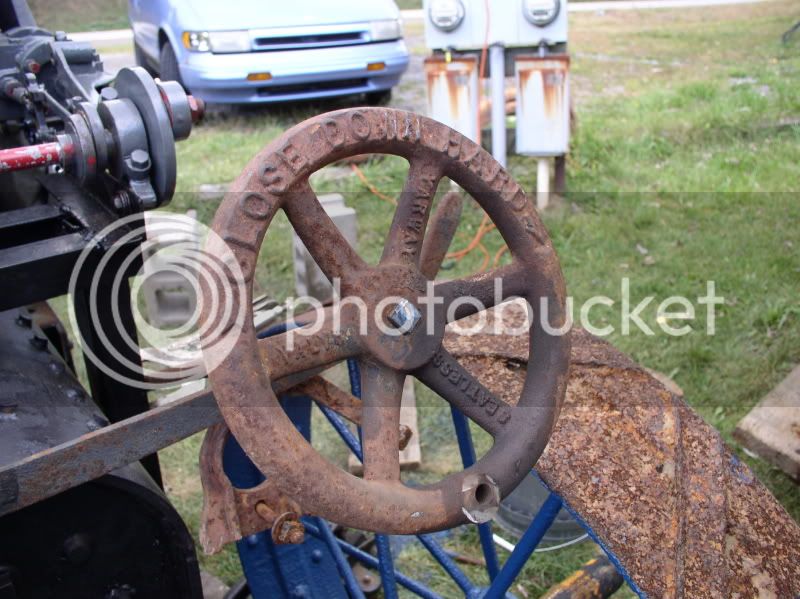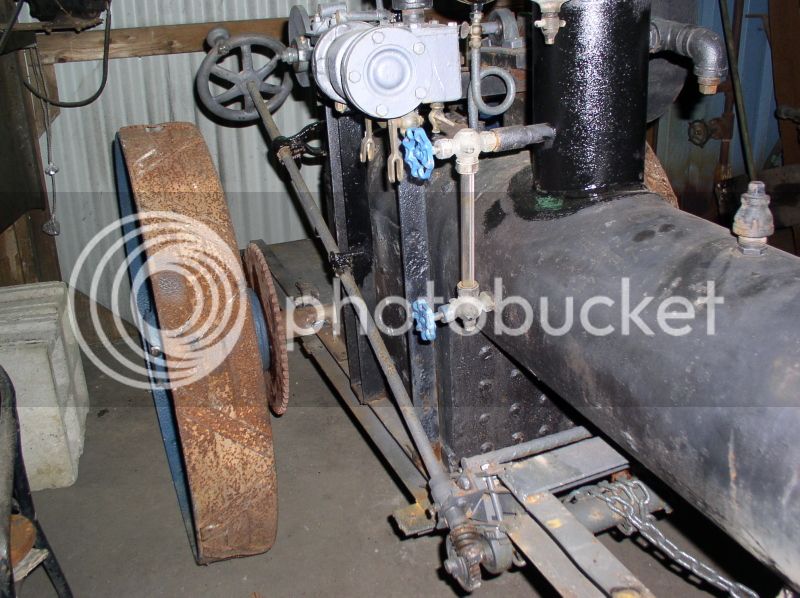Allen
Well-Known Member
- Joined
- Jul 14, 2008
- Messages
- 128
- Reaction score
- 55
Today, I want to talk a bit about visualization, adaptive re-use and reverse engineering.
Back when I sold model engine kits, I'd occasionally have old part built models, usually just the pieces without drawings. Guys would get annoyed because there were no prints, and even more upset if I'd say that any machinist worth his salt shouldn't NEED plans to finish them....
Today's project was to start putting together the steering gear on the roller. No plans, not even a sketch. From miscellaneous parts accumulated from many different places over the last DECADE.....

Visualizing how things might go together is a skill most people can learn. Thinking in 3 dimensions really isn't that much harder than reading a blueprint that somebody else drew -- by thinking in 3 dimensions.... mocking the parts up is one way to practice, sooner or later you can do it all in your head. I temporarily mocked the steering shaft up to see how long to cut it, and what size spacers and bolts I needed.
It's just being held in midair by a big clamp and a stray lever that was handy.

Many guys go through all sorts of contortions over model gears. Scratch hobbing exact scale gears from billet. Pouring over catalogs to get a perfect match from Boston Gear. I found this worm and gear at a flea market in a surplus vendor's bin for $10 or so. Then I reverse engineered everything else from there. These gears took 3/4" shafts, so while I was getting the spreader wheels I raided Wilbert's scrap pile for a couple stray chunks of that. Then I got some super cheap Chinese bearings off feebay.... and then made the rest to fit the frame.... the winding drum itself will be a bit of 1-1/2" pipe made to FIT the space. No drawings there, either - just a tape measure and a saw.

Which brings us to adaptive re-use. I needed a steering wheel. I could have gotten a fancy model casting from someone selling kits. Or I could have made drawing and fabricated one from bar. Instead I found this large valve handwheel in another flea market for the princely sum of $5. About the right size, all it needs is a steering knob, and the lettering ground off. I made it fit the shaft by simply squaring off the rod by eye with an angle grinder. If I get ambitious I'll put in a set screw or maybe I'll just peen the end of the shaft to hold it. Is it perfectly true? It's closer than you'd think..... and perfectly serviceable.

Back to the salt mines....
Back when I sold model engine kits, I'd occasionally have old part built models, usually just the pieces without drawings. Guys would get annoyed because there were no prints, and even more upset if I'd say that any machinist worth his salt shouldn't NEED plans to finish them....
Today's project was to start putting together the steering gear on the roller. No plans, not even a sketch. From miscellaneous parts accumulated from many different places over the last DECADE.....

Visualizing how things might go together is a skill most people can learn. Thinking in 3 dimensions really isn't that much harder than reading a blueprint that somebody else drew -- by thinking in 3 dimensions.... mocking the parts up is one way to practice, sooner or later you can do it all in your head. I temporarily mocked the steering shaft up to see how long to cut it, and what size spacers and bolts I needed.
It's just being held in midair by a big clamp and a stray lever that was handy.

Many guys go through all sorts of contortions over model gears. Scratch hobbing exact scale gears from billet. Pouring over catalogs to get a perfect match from Boston Gear. I found this worm and gear at a flea market in a surplus vendor's bin for $10 or so. Then I reverse engineered everything else from there. These gears took 3/4" shafts, so while I was getting the spreader wheels I raided Wilbert's scrap pile for a couple stray chunks of that. Then I got some super cheap Chinese bearings off feebay.... and then made the rest to fit the frame.... the winding drum itself will be a bit of 1-1/2" pipe made to FIT the space. No drawings there, either - just a tape measure and a saw.

Which brings us to adaptive re-use. I needed a steering wheel. I could have gotten a fancy model casting from someone selling kits. Or I could have made drawing and fabricated one from bar. Instead I found this large valve handwheel in another flea market for the princely sum of $5. About the right size, all it needs is a steering knob, and the lettering ground off. I made it fit the shaft by simply squaring off the rod by eye with an angle grinder. If I get ambitious I'll put in a set screw or maybe I'll just peen the end of the shaft to hold it. Is it perfectly true? It's closer than you'd think..... and perfectly serviceable.

Back to the salt mines....















































































